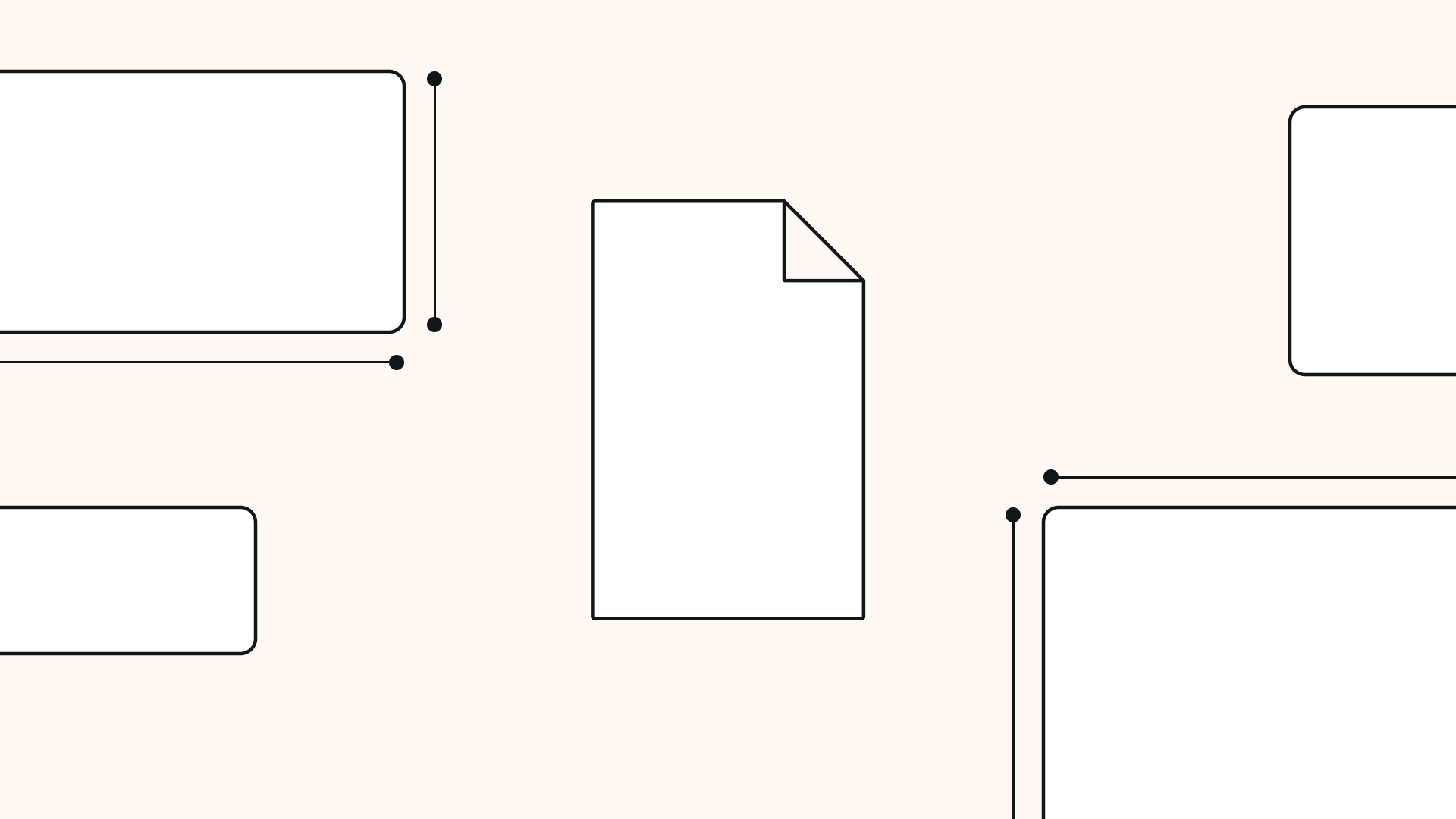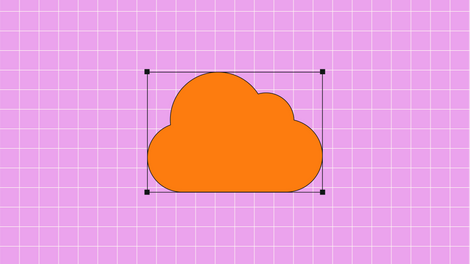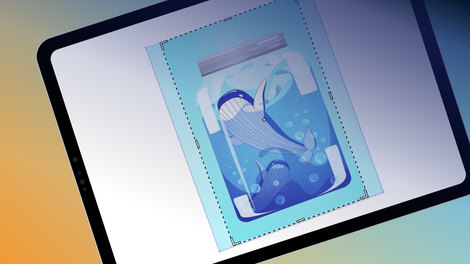Have you ever taken a closer look at the printing paper you always buy? It’s quite impressive, really, if you’ve ever stopped to appreciate the math that goes into a simple piece of paper.
You have more than likely heard of A5 or Tabloid paper sizes, but for most of us, the most important page size that matters is A4 or US Letter. Let’s see why this size is so essential.
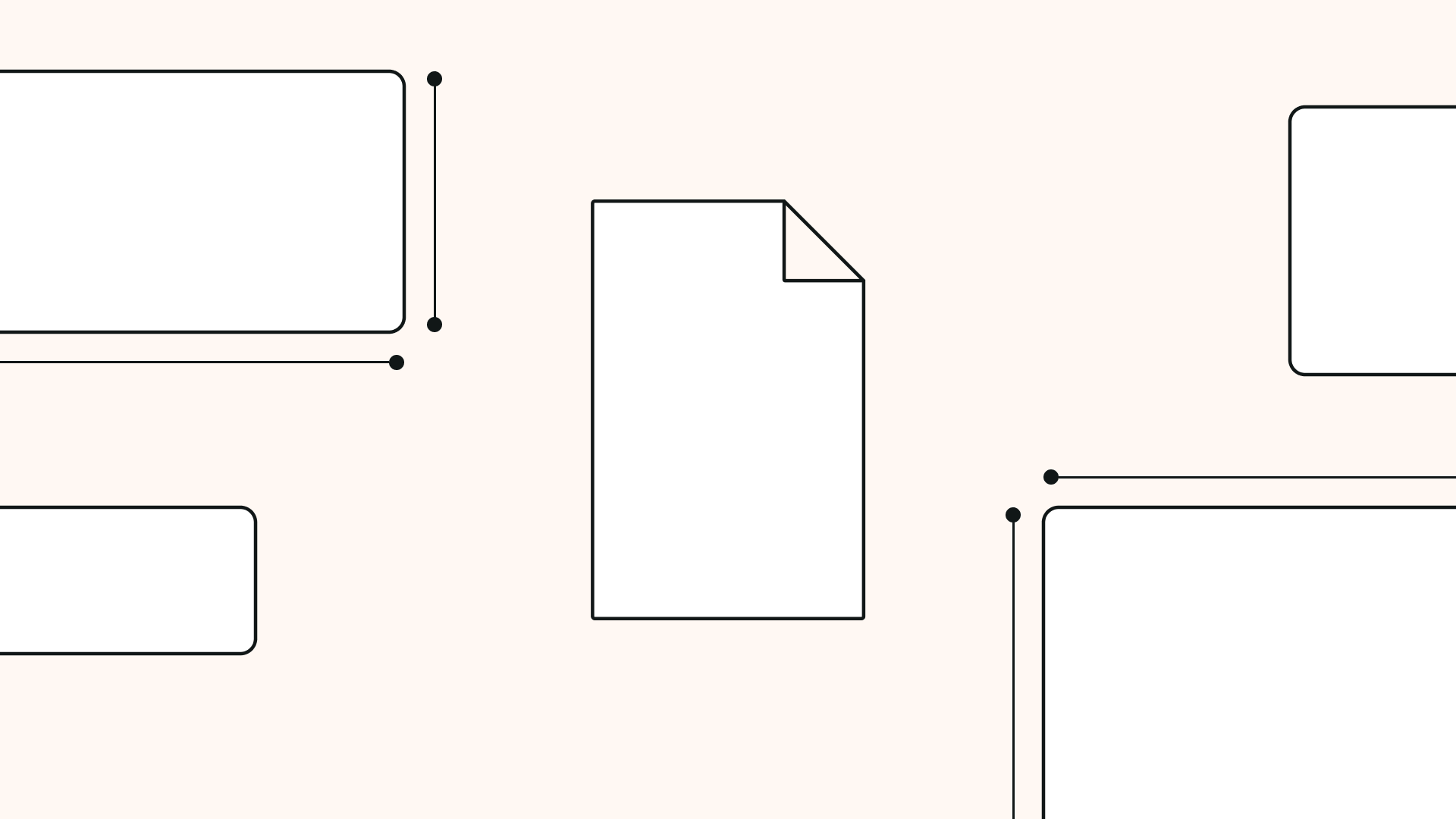
A4 size: 210 x 297mm (8.27 x 11.6 inches)
A4 is the most common paper size, used for a wide range of documents, including magazines, catalogs, letters, forms, notebooks, and the list goes on.
A4 measures 210 x 297 mm or 8.27 x 11.69 inches. In PostScript, it’s 595 × 842 pts.
A4 is part of a set of page sizes recognized worldwide as the ISO A or ISO 216 standard. These international paper sizes are based on the German DIN 476 standard from 1922. A4 is actually often referred to as DIN A4.
Jumpstart your ideas with Linearity Curve
Take your designs to the next level.
The ISO standard
The ISO standard names the A-series with the letter “A” followed by a number. Counter-intuitively, the larger that number, the smaller the paper.
The most convenient characteristic about the ISO paper standard is that each format is the exact same aspect ratio.
So if you fold an A4 paper in two along its shortest sides, you get an A5 sheet. Two A4 pages next to each other equal the A3 paper size.
The dimensions always stay the same, and the height to width ratio is always 1 to 1.41 which is the square root of 2.
The range of A-sized paper starts from A0, the biggest size, and has a surface of one square meter. With an aspect ratio of 1:1:41, A0 ends up being 841 x 1189mm. A bit of math goes a long way!
The rest of the sizes are easy to figure out since folding an A0 sheet of paper results in A1 which is then 594 x 841mm- the height of A1 is equal to the width of A0, and its width is half the height of A0.
But honestly, there’s no need to strain yourself to figure all this out. This table has all the information you need:
| A0 | A1 | A2 | A3 | A4 | A5 | A6 | A7 | A8 | A9 | A10 |
|---|---|---|---|---|---|---|---|---|---|---|
| 33-1/8 x 46-13/16 inches | 23-3/8 x 33-1/8 inches | 16-1/2 x 23-3/8 inches | 11-3/4 x 16-1/2 inches | 8-1/4 x 11-3/4 inches | 5-7/8 x 8-1/4 inches | 4-1/8 x 5-7/8 inches | 2-15/16 x 4-1/8 inches | 2-1/16 x 2-15/16 inches | 1.5 x 2.0 inches | 1.0 x 1.5 inches |
| 841 x 1188mm | 594 x 841mm | 420 x 594mm | 297 x 420mm | 210 x 297mm | 148 x 210mm | 105 x 148mm | 74 x 105mm | 52 x 74mm | 37 x 52mm | 26 x 37mm |
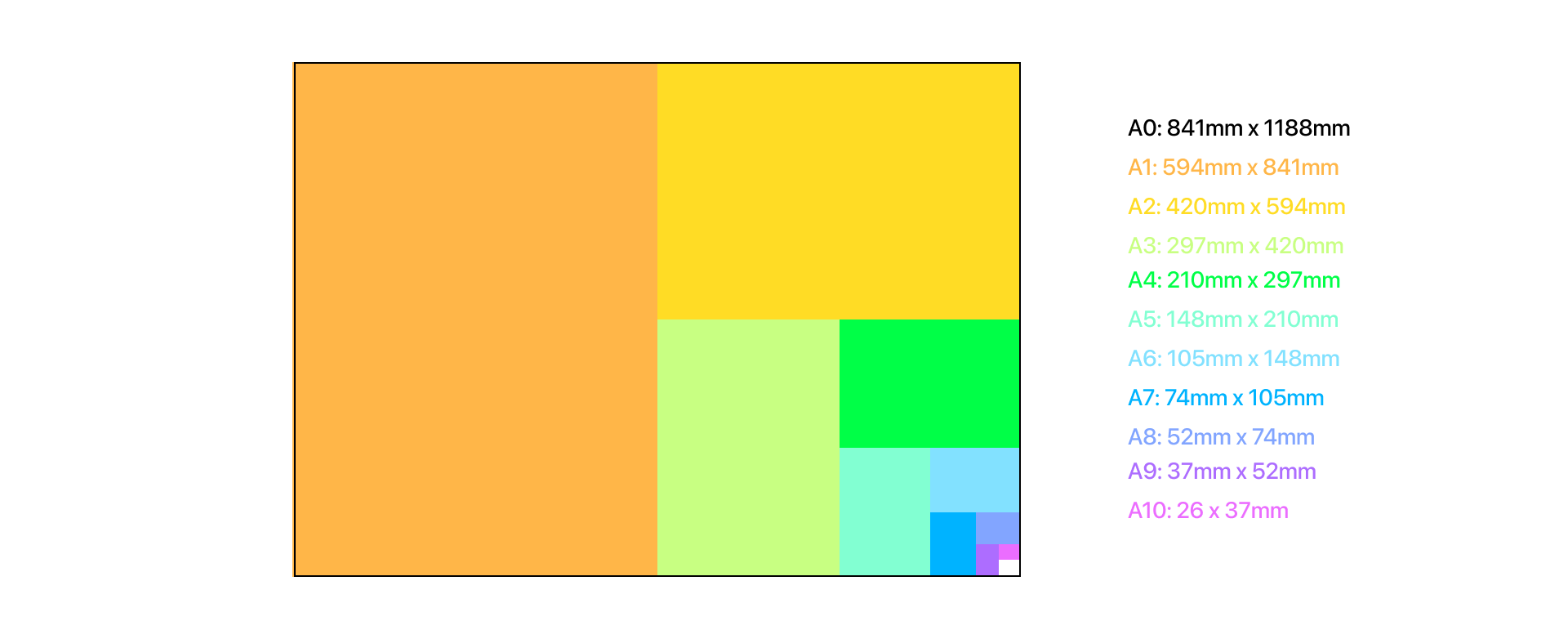
Ready to learn more about design?
Visit our Academy for free graphic design courses.
B and C series
While the most popular series of the ISO standard is the A-series, there is also a B and a C series.
B series
The B series was brought to provide a wider range of paper sizes, while the C series is used for envelopes that perfectly fit the A-papers.
| B0 | B1 | B2 | B3 | B4 | B5 | B6 | B7 | B8 | B9 | B10 |
|---|---|---|---|---|---|---|---|---|---|---|
| 39.4 x 55.7 inches | 27.8 x 39.4 inches | 19.7 x 27.8 inches | 13.9 x 19.7 inches | 9.8 x 13.9 inches | 6.9 x 9.8 inches | 4.9 x 6.9 inches | 3.5 x 4.9 inches | 2.4 x 3.5 inches | 1.7 x 2.4 inches | 1.2 x 1.7 inches |
| 1000 x 1414mm | 707 x 1000mm | 500 x 707mm | 353 x 500mm | 250 x 353mm | 176 x 250mm | 125 x 176mm | 88 x 125mm | 62 x 88mm | 44 x 62mm | 31 x 44mm |
| C0 | C1 | C2 | C3 | C4 | C5 | C6 | C7 | C8 | C9 | C10 |
|---|---|---|---|---|---|---|---|---|---|---|
| 36.1 x 51.1 inches | 25.5 x 36.1 inches | 18.0 x 25.5 inches | 12.8 x 18.0 inches | 9.0 x 12.8 inches | 6.4 x 9.0 inches | 4.5 x 6.4 inches | 3.2 x 4.5 inches | 2.2 x 3.2 inches | 1.6 x 2.2 inches | 1.1 x 1.6 inches |
| 917 x 1297mm | 648 x 917mm | 458 x 648mm | 324 x 458mm | 229 x 324mm | 162 x 229mm | 114 x 162mm | 81 x 114mm | 57 x 81mm | 40 x 57mm | 28 x 40mm |
Envelopes and paper sizes
As we’ve seen, an A paper fits inside a C envelope of the same number. But the consistent aspect ratio of the ISO standard paper sizes allows so much more freedom than that. You can easily fit a larger paper size inside a smaller size envelope. What is this magic? Simple. You just need to fold your paper in half!
If you have an A2 paper you need to fold it twice in half in order for it to fit inside a C4 envelope. If you have an A3 paper, you only need to fold it once. The difference in numbers between the paper and the envelope (from 2 to 4, from 3 to 4) dictates how many times you need to fold it.
International usage
As you may have noticed, the ISO standard is not so user-friendly when it comes to inches. The reason why was hinted before in this article - it originated in Germany, a country that uses the metric system. More specifically, German scientist Georg Christoph Lichtenberg proposed this system way back in 1786. In 1922, his ideas were finally brought to life as the DIN 476 standard, which was adopted during World War II.
Although it is widely regarded as the international standard, there is also a North American system that is primarily used in the USA, Canada, and Mexico. The US also has recently introduced the ANSI standard. It sounds confusing, but here's what that means.
Get creative with our ready-to-use templates.
Linearity Curve offers 1000+ templates for every social media platform and various use cases.
North American sizes
North American sizes are simply based on widely used paper formats throughout history, with arbitrary aspect ratios. The most common formats are Letter, Legal and Tabloid.
| Junior Legal Size | Letter Size | Legal Size | Tabloid (Ledger) Size |
|---|---|---|---|
| 8 x 5 inches | 8.5 x 11 inches | 8.5 x 14 inches | 11 x 17 inches |
| 203 x 127mm | 216 x 279mm | 216 x 356mm | 279 x 432mm |
You most likely use these formats in your everyday life without thinking much of it. While these formats are comparable with the A size standard, they are nonetheless different.
But there have been efforts to create a national standard. The first attempt came as early as President Hoover at the beginning of the 1900s. He wanted to introduce the Government paper size of 8 / 10 ½ inches. Alas, this format was not popularized among the general public, so president Reagan made the Letter format the standard again.
But it wasn’t until 1995 that the US adopted the ANSI standard. The different formats in this system are named by using ANSI followed by a letter. Even though this standard exists, the traditional sizes of Letter, Tabloid and or Legal are still widely used.
ANSI system
This young standard is based on the traditional Letter format - called the ANSI A.
This standard compares with ISO in the sense that if you cut a sheet in half, you will get two sheets of the next size. But it's still different from ISO in many ways. Aspect ratios are not strictly maintained throughout the ANSI paper sizes, as they alternate between 1.2941 and 1.5455. Which makes enlarging and reducing different formats to fit each other much more difficult and less systematic than with the ISO sizes.
| ANSI A | ANSI B | ANSI C | ANSI D | ANSI E |
|---|---|---|---|---|
| 8.5 x 11 inches | 11 x 17 inches | 17 x 22 inches | 22 x 34 inches | 34 x 44 inches |
| 216 x 279mm | 279 x 432mm | 432 x 559mm | 559 x 864mm | 864 x 1118mm |
| Ratio: 1.2941 | Ratio: 1.5455 | Ratio: 1.2941 | Ratio: 1.5455 | Ratio: 1.2941 |
Follow along
Learn Linearity from A to Z with this downloadable sample file.
Printing an A4-sized picture
Okay, coming back to A4. Maybe you have an illustration or a photo that you’d like to fit the entirety of your A4 sheet. The number of pixels depends on your desired output quality.
At 300 dpi (dots per inch, equivalent to pixels per inch), you need to have an image that is 2480 x 3508 px. This resolution is recommended for printing materials that are visible up close, like books, magazines, and brochures.
At half the resolution, 150 dpi, the image can be half of the size, 1240 x 1754 px. This is the minimum quality needed for newspapers or posters.
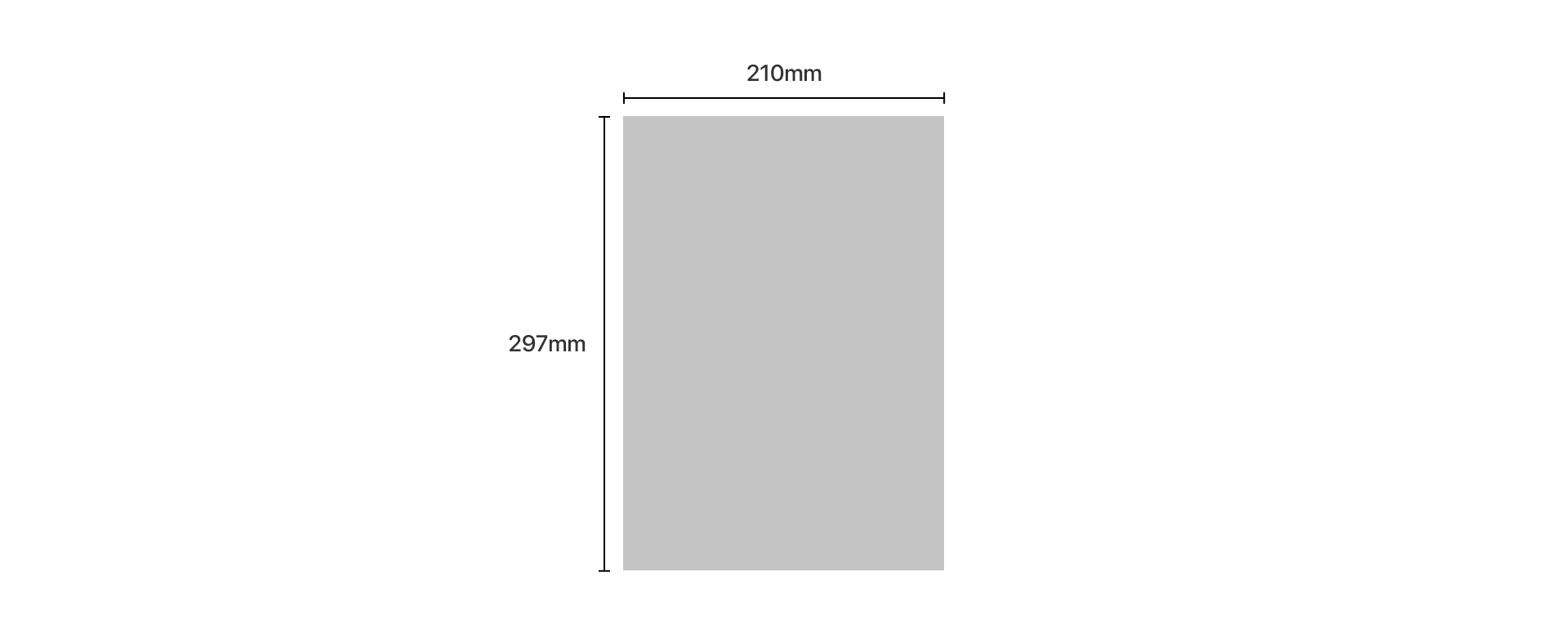
Printing A4 and letter documents
Because the rest of the world is using the ISO standard, adapting size from North America can become an issue sometimes. If an American student, for example, would have to submit a presentation for an international conference, they would have to use A4 paper sizes. But both formats can be converted into each other in your text editing or design software, like Linearity Curve.
If you received an A4 document and you’d like to view or print it on Letter, you just have to set the content at 94% magnification. Since a Letter-sized paper is 6% less tall than A4.
Vice versa, if you want to copy content from Letter to A4, or you want to print A4 on a Letter-sized paper, then you need to set the magnification at 97% since the A4 paper is 3% less wide than a Letter paper.
But luckily Linearity has all these formats ready for you as templates so you don’t need to do all this complicated math.
Whatever document you want to use, we have different paper sizes at your disposal. So you can start creating straight away.
Jumpstart your ideas with Linearity Curve
Take your designs to the next level.
Share this!
Benjamin Barnhart
Ben is the Principal Copywriter for Linearity, living in Berlin. His hobbies include board games, cooking, reading, and writing.

Share this!
Get started
with Linearity today.
Linearity runs on iPadOS 14 & iOS 14 and later, or macOS Big Sur and later (with native M1 support).
Get started for free

:quality(75))
:quality(75))



:quality(75))
